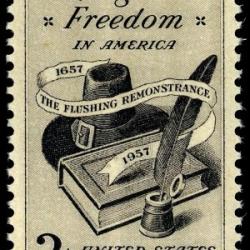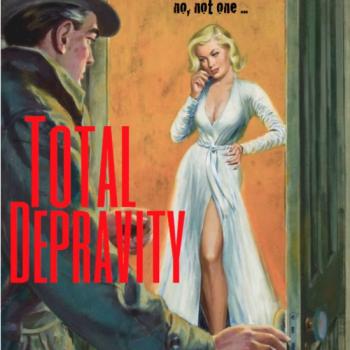Blasphemy is an indispensable human right. Without the right to engage in blasphemy, there can be no freedom of inquiry, expression, conscience or religion.
We can have laws against blasphemy or we can have religious freedom. We can never have both.
We have every right to take offense and to give offense. But we should not seek to take offense. And we should not seek to give offense.
Since blasphemy is a theme today across much of the Web, let me quote again some wise words from David Dark’s fine book The Sacredness of Questioning Everything.
This is from Dark’s chapter on “Questioning Our Offendedness”:
It might be of interest to note that the earliest known pictorial depiction of Jesus on the cross was a cartoon. Often referred to as “The Alexamenos Graffito,” it’s a crude drawing of a human figure raising a reverent hand toward a crucified individual with the head of a mule. Discovered on the plaster wall of an ancient Roman school, this second-century parody of a certain Jewish Messianic movment includes, scrawled beneath the caricature, a taunt perhaps best translated as “Alexamenos worships his god.”
I wish this particular cartoon could find wider distribution because it dismantles the image of the Christian, historically speaking, as a member of a special interest group, a sleeper cell for a political party, or a power constellation of offended people looking for something to boycott. …
It probably would have been out of keeping with the presumed ethos of the Jesus whom Alexamenos dared to admire to angrily condemn the ridicule as unacceptable (with a hint of violent reprisal). If the Sermon on the Mount is any indication, Jesus taught his followers that suffering public denunciation is part of the deal. Proclaiming the kingdom of God does not include shouting down anyone who finds your proclamation unconvincing. …
The feeling of offendedness is invigorating. It might even be an effective way to bend a population toward a tyrant’s will. But we must never settle for it. We must not confuse an accelerated pulse rate for the presence of the Holy Spirit in our hearts. We must interrogate our offendedness, hold it open for question. …
Feeling offended is a reassuring sensation. It’s easier than asking ourselves if the redeeming love of God is evident in the way we communicate with people. It’s easier than considering our relationships with the huddled masses throughout the world who find themselves on the wrong end of our economic policies and other forms of warfare. Perhaps our cutthroat ways bear some relationship to our confused notions of God. Maybe we think God, as an intergalactic economist, is a survival-of-the-fittest type. … We might even think that being offended and angry and on the defensive is to be more firmly aligned with the Almighty. …
To keep it all simple and safe, we often become selective fundamentalists. We know where to go to have our prejudices explained as just and sensible, our convictions strengthened, our group or political party reaffirmed. We process whatever already fits the grid that is hardwired (or re-hardwired) in our heads. It’s difficult for anything else to get through. We’re easily offended. Maybe we’re looking to feel offended, which can make us feel better about ourselves. Feeling offended summons a sense of being in the right, a certain strength, a kind of power, an espresso shot of righteous indignation. And if the image of God hardwired into our nervous system is easily offended and put off by certain people and their offensive behavior, there’s a feeling of being that much closer to the winning side, that much more likely to be numbered among the elect, the saved, the documented.












